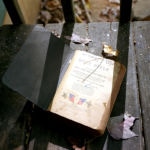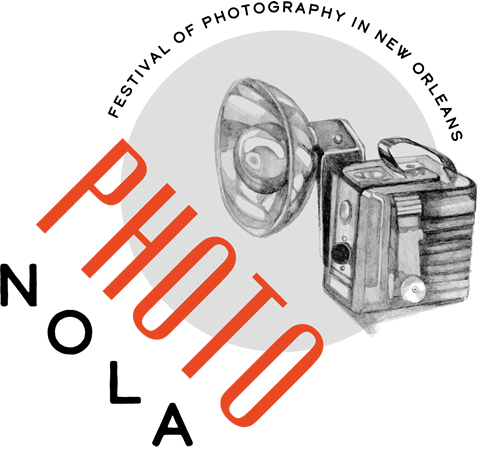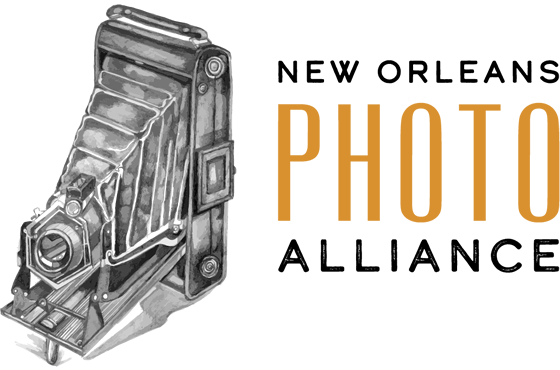At the conclusion of the portfolio reviews, each reviewer is asked to note three outstanding projects. Their selections are then tallied to determine that year’s PhotoNOLA Review Prize Winners. Rachel Boillot was awarded the 2017 PhotoNOLA Review Prize, which includes a solo exhibition at the New Orleans Photo Alliance Gallery during the thirteenth annual PhotoNOLA Festival, a cash award of $1000, a marketing consultation with Mary Virginia Swanson, and a $1500 credit with Edition One Books to create her own publication. 2nd Place winner, Susan kae Grant received a Santa Fe Photographic Workshops gift certificate, and 3rd Place winner Jared Ragland, along with the others, will be recognized with a feature on Lenscratch.

“Rachel Boillot’s Silent Ballad is an elegy to roots music and the people and places that foster it. Her vivid photographs chronicle of the ways traditions persist in the face of a shifting society. They are not only stunning works of art, but also valuable records of a distinctly American culture.”
– Gregory Harris, Assistant Curator of Photography, High Museum of Art
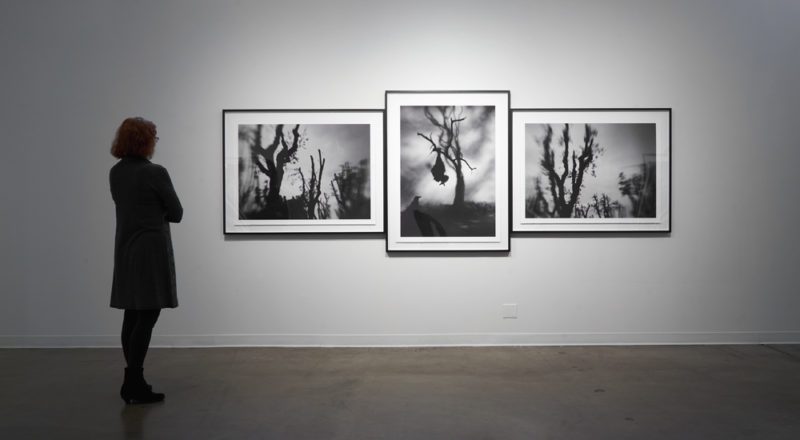
“The sound and sensible basis of Susan kae Grant’s Night Journey may lie in its science and technology, but that is only the start of a remarkable vision. Dreams may be their source and ultimately their challenge, but her imagery is both complex and seductive: a vibrant invitation for us to see and feel what worlds may exist in our subconsciousness. Her final prints and the installations that subsume us with their light and magic are engaging environments that can mystify, inspire and maybe never let us go.”
– Roy Flukinger, Curator Emeritus, Harry Ransom Canter

“I give tremendous credit to Jared Ragland for taking on the big issues through the medium of photography. His sensitive, stark, and beautiful black and white images of those caught up in the methamphetamine crisis in Alabama help us to understand the personal tragedy that this drug has brought upon rural America. The direct cinema verité style of his still images softens our hearts to the victims and survivors, and helps us to appreciate that his subject’s only crime is to have been born in flyover country with diminishing opportunities.”
—Glenn Ruga, Executive Editor, ZEKE magazine







Rachel Boillot
“Down in the valley,
Valley so low,
Hang your head over,
Hear the wind blow,
Down in the valley,
Walking between,
Telling our story
Here’s what it sings.”
– Down in the Valley ballad, as collected by Carl Sandburg
and published in The American Songbag in 1927.
Silent Ballad: Time Sings in the Cumberland Plateau is a quiet look at heritage in East Tennessee and America’s Appalachian region. Old-time musical traditions, faith, and story-telling all inform this portrait of place.
These photographs were made along the serpentine mountain roads between Signal Mountain and Cumberland Gap, tracing Tennessee’s Cumberland Trail corridor. They detail my own exploration of the region as I listened to its sounds and considered how they might translate to visual imagery. I’m still out somewhere on one of those roads – and I’m still listening.
BIO:
Rachel Boillot is a photographer, film-maker, and educator based in Cumberland Gap, TN. She holds a BA in Sociology from Tufts University, a BFA from the School of the Museum of Fine Arts, and an MFA in Experimental and Documentary Arts from Duke University. Her work has been funded by the Annenburg Foundation (Los Angeles, CA), the Riverview Foundation (Chattanooga, TN), the Tennessee Arts Commission (Nashville, TN), and the National Endowment for the Arts (Washington, D.C.).
Boillot teaches in the Art Department at Lincoln Memorial University while directing and co-producing the Cumberland Folklife series of documentary films. She recently completed a feature-length documentary film on Tennessee’s musical Sharp family, titled In That Valley of Gold. Silent Ballad will be published by Daylight Books in the Spring of 2019. A second edition of the self-published volume Post Script will be re-issued in 2019. She recently joined the team at the Kentucky Documentary Photography Project.
Susan kae Grant
The on-going series, Night Journey, uses the shadow as metaphor to create tableaux’ that explore the perceptual and psychological aspects of dreams, memory and the unconscious. The work is divided into six chapters and consists of a series of large-scale triptychs, a suite of black & white prints, a projection piece, and a room-size installation with an audio soundtrack and 4’x8’ murals printed on chiffon fabric.
Inspiration for Night Journey can be traced back to my childhood premise that dreams take us to far away places and are perceived as physical and psychological worlds that exist outside the bedroom. This lead to an inquiry into the nature of REM sleep and culminated in research I conducted at the Southwestern Medical Center Sleep Laboratory in collaboration with sleep scientist, Dr. John Herman. Using myself as subject, I was tape recorded in the laboratory on many occasions while awakened from REM sleep to gain access to the unconscious and for inspiration in fabricating imagery for the series. To create the images, I photograph shadows of models and props in my studio using a 4×5 view camera with a digital Leaf back. I start by creating the backgrounds, then invite models into the studio and intuitively direct them through a series of gestures and poses until the narrative comes to life.
Constructed entirely as triptychs, Convergence is the most recent work in the series, and envisions multiple states of consciousness. Viewing the images in sequence is reminiscent of connections made from moments of episodic memory to observations based in reality. By shifting views and focus, I challenge the viewer to contemplate a central narrative that is at times dangerous, whimsical, confusing and thought provoking. Moving from image to image is intended to be simultaneously engaging and unsettling which suggests a strong sense of familiarity and disorientation.
To create the triptychs, I combined images created in the studio with images shot on location while traveling in England, Scotland and Italy. During this time I found myself photographing scenes reminiscent of the shadow work already fabricated in the studio. Upon return from Europe I began pairing the images with studio images to elicit multiple meanings and suggest connections to one’s visual memory.
Throughout the Night Journey series, I continue to use the shadow to imply a sense of reality without being real. It allows for fabrication of a world or a detail that occurs only in the photograph. The scenarios and spaces portrayed are surrogates for what once was, and are now imagined. In the triptychs, by locating a central fabricated shadow narrative between disparate images from reality, I am interested in creating dialogs that connect reality with fiction and suggest questions as to which is real.
BIO:
Susan kae Grant lives in Dallas, Texas, is represented by Conduit Gallery, and has lectured and exhibited her work throughout the United States, Canada, China, Europe, Australia, British Columbia, Africa, Guatemala, and Japan. She is on the staff of the International Center of Photography (NYC) where she has taught photographic bookmaking workshops each spring since 1993.
Public collections of Grant’s photographic and book-works include The George Eastman House; The J. Paul Getty Museum; The Smithsonian Institution Library, Special Collections; The Minneapolis Art Institute; The Tokyo Museum of Photography; Museum of Fine Arts, Houston; and The Victoria and Albert Museum National Library in London. Galleries representing her work include Conduit Gallery, Dallas, Texas; Vamp & Tramp Booksellers, LTD, Birmingham, Alabama; and See+Gallery, Shanghai, China.





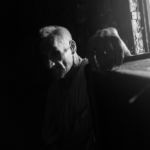




Jared Ragland
Good Bad People
In April 1862 – just a year into the American Civil War – The New York Times reported on a dispatch from Union troops titled, “Advance into Alabama.” It read:
An hour before sundown we reached another barren region inhabited by poor white trash. Their houses were of the worst imaginable description, and how they managed to obtain a living upon such as soil, was a problem to us. Yet hither the pitiless monopoly of the slaveholding class had driven them, and, by some means were other, they managed to wring sufficient food to keep themselves and their children from starving, out of these inhospitable rocks.[i]
Impressions of Alabama have changed little in 150 years, particularly as the roots of deep poverty have perpetuated class division and precipitated widespread drug addiction. The rise in use of methamphetamine over the last decade has led to increased cultural anxiety about the drug and those who use it while the general perception of the meth-head is perpetuated by popular television programs and pervasive anti-meth campaigns. These limited representations typically paint one-dimensional, demonized characters whose chronic drug use is epitomized by obsessiveness, paranoia, and monstrous physical side effects. But while there are certainly deleterious consequences to meth use and stereotypes often ring too true, existing cultural narratives too often fall short of individually considered realities.
Photographed in collaboration with University of Alabama at Birmingham sociologist Heith Copes, Ph.D., Good Bad People tells the complex, often contradictory stories of more than two dozen people who use methamphetamine from Sand Mountain, a sandstone plateau in northeast Alabama infamous for extreme poverty, poultry processing plants, Pentecostal snake-handlers, and meth production. Through the combination of first person accounts, ethnographic interview texts, research analysis, and documentary photographs, Good Bad People seeks to engage with the current conversation concerned with the pivotal political role and cultural identity of the rural American South and reveal how people who use meth create and communicate a sense of identity as they navigate social and economic marginalization.
Southern Gothic literature has described the South as a deeply flawed place, where the lives of eccentric characters are shaped by poverty, alienation, crime, and violence as they struggle through morally questionable actions to make sense of the world around them. The broken, often sinister, characters in stories by Flannery O’Connor, Carson McCullers, and Harry Crews embody madness, despair, and decay to reflect social realities and critique conventional cultural understandings. Similarly, Good Bad People tells the stories of Chico, an ex-convict, meth dealer, and self-proclaimed member of the Aryan Brotherhood; Ryan and Alice, a young runaway couple on the brink of a lifetime of addiction; Willow, a transient, chronic binge user; and Fred, a long-time user who lost everything he owned in a house fire.
[i] “Gen. Mitchell’s March Into Alabama”. The New York Times. April 14, 1862.
BIO:
Jared Ragland is a fine art and documentary photographer and former White House photo editor. He is at work on a long-term documentary on methamphetamine use in rural northeast Alabama and currently teaches and coordinates exhibitions and community programs in the Department of Art and Art History at the University of Alabama at Birmingham.
Jared is the photo editor of National Geographic Books’ The President’s Photographer: Fifty Years Inside the Oval Office and has worked on assignment for NGOs in the Balkans, the former Soviet Bloc, East Africa and Haiti. In 2015, Jared was named one of TIME Magazine’s “Instagram Photographers to Follow in All 50 States.” He is the recipient of a 2017 Alabama State Council on the Arts fellowship and was awarded third place at the 2017 PhotoNOLA Review Prize for his project, Good Bad People.
His work has been exhibited internationally, with recent shows at Umbrella Arts in New York, New Orleans’ The Front, Candela Books + Gallery in Richmond, Va., the In/Out Transylvania Foto Festival in Cluj, Romania, The National Geographic Society, Birmingham Museum of Art SHIFT space, Huntsville Museum of Art, Montgomery Museum of Fine Arts, Mobile Museum of Art, Wiregrass Museum of Art, Rayko Photo, the Los Angeles Center of Photography, Click! Photography Festival, and Filter Photo. Jared’s work can be found in collections at the Archive of Documentary Arts at Duke University, the Beinecke Rare Book & Manuscript Library at Yale University, Birmingham Museum of Art, Chrysler Museum of Art, Contemporary Art Center New Orleans, and the Phoenix Art Museum, and his photographs have been featured by Forbes, The Oxford American, and The New York Times.
Jared is an alumnus of LaGrange College and a graduate of Tulane University with an MFA in Photography. He resides in his hometown of Birmingham, Alabama.




